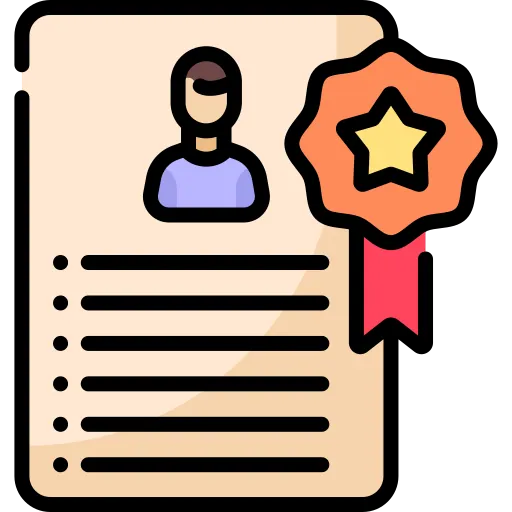Extending the Product Life Cycle: Strategies for Long-Term Success
In today’s fast-paced technology landscape, where innovation is rapid and trends are transient, extending the life cycle of IT products is a significant challenge. However, for IT companies aiming to maximize their investments, build customer loyalty, and achieve sustainable growth, understanding and implementing strategies to extend the product life cycle is essential.
In this blog, we’ll delve into actionable product life cycle extension strategies that IT companies can employ to prolong the viability and relevance of their products. We’ve also added examples of product life cycle extension strategies to help you get clarity.
So, if you want to understand how to extend a product life cycle in depth, keep reading.
Each stage of the product life cycle brings its own set of challenges and opportunities. Extending the life cycle involves navigating these stages while keeping your product appealing and valuable.
But What Is Product Life Cycle Extension?
Product life cycle extension involves strategic efforts by companies to extend the relevance and viability of a product beyond its anticipated life cycle stages. It recognizes that with careful planning and innovative strategies, products can transcend the typical introduction, growth, maturity, and decline phases.
This product life cycle extension approach aims to delay the decline phase by adding value, adapting to changing customer needs, and capitalizing on emerging market trends. It requires a deep understanding of the product, target audience, and industry landscape, and entails tactics such as continuous innovation, diversification, enhanced customer engagement, and alignment with sustainability practices. Ultimately, product life cycle extension is about staying adaptable, seizing opportunities, and maintaining a lasting impact in a rapidly evolving market.
Now, let’s understand how you can extend the life cycle of your products strategically.
7 Powerful Strategies for Product Life Cycle Extension
1. Keep Innovating to Stay Relevant & Fresh
To stay concurrent with the changing dynamics of consumers, constant innovation is required in any product. It is important that you regularly infuse new features, functionalities, or technologies into your products to keep your customers interested, engaged, and curious. You can innovate consistently by analyzing industry trends, customer feedback, and emerging technologies to identify scope for innovation.
A customer-centric approach is paramount for extending the product life cycle. By putting yourself in your customer’s shoes, you understand your customers’ pain points, aspirations, and changing needs. Use this information and regularly gather feedback through surveys, forums, and direct interactions to get deeper insights that drive your product’s evolution.
For example: The smartphone industry makes frequent updates and new models keep customers excited about the latest advancements, extending the life cycle of the product. Consider integrating artificial intelligence, Internet of Things (IoT) capabilities, or other cutting-edge features that align with user needs.
2. Product Diversification for Expanding Your Reach
Product diversification, a crucial strategy for extending the product life cycle, involves expanding your product offerings to serve a broader spectrum of customer needs. This approach taps into existing strengths and technologies to create a portfolio of products that collectively meet a range of requirements.
Diversification acts as a risk mitigator, providing stability when market trends shift. It minimizes reliance on a single product, enabling businesses to navigate market fluctuations more effectively. However, successful diversification requires thorough research to identify unmet needs and gaps in your current offerings. By addressing these gaps with tailored products, companies can create a brand that remains versatile, adaptive, and appealing throughout various stages of the product life cycle.
For instance, a cybersecurity software company might expand into offering training courses on cybersecurity best practices. This approach not only broadens revenue streams but also strengthens brand loyalty as users see your company as a holistic solution provider.
3. Mature Product Enhancements For Revitalizing Maturity
In the maturity stage, when sales growth stops going higher and hits the plateau, strategic enhancements can reignite interest. Introduce updates that enhance user experience, efficiency, or compatibility. Such enhancements can be informed by analyzing user behavior data and soliciting user feedback.
For example, consider graphic design software that introduces an intuitive AI-driven feature that streamlines complex design tasks. This enhancement revitalizes the product’s attractiveness to both existing and potential customers.
4. Elevate Customer Support To Build Trust Over Time
Extend the life cycle of your product by providing exceptional customer support to your customers. Offering timely assistance, informative resources, and quick issue resolution promotes customer loyalty. Happy customers are more likely to continue using your product and recommend it to others.
Invest time in developing a robust customer support system that includes live chat, comprehensive documentation, and responsive ticketing systems as part of your robust product life cycle extension strategy. Additionally, consider implementing self-help resources, such as video tutorials or knowledge bases, which empower users to make the most of your product.
Looking for product managers?
Transform your vision into reality with our expert product managers! Ready to drive your projects to success?
Contact us today and let our skilled professionals guide your product from concept to market dominance!






5. Leverage Strategic Marketing To Redefine Perceptions
Marketing isn’t just for new products, it is a potent tool for extending the life cycle of existing ones. Rebranding, redesigning packaging, or launching targeted marketing campaigns can infuse new life into your product.
Leverage the power of brand storytelling to highlight your product’s journey and history, and how it continues to meet your customers’ evolving needs. Showcase case studies or success stories that demonstrate the enduring value your product offers. Reshape customer perception and capture new interests by shifting the narrative..
6. Explore Global Opportunities to Expand Market Reach
One of the aspects of your product life cycle extension strategy must be expanding your product’s geographical reach. Different regions might be at various stages of the life cycle for similar products. Entering new global markets not only introduces your product to new audiences but can also rejuvenate its life cycle.
This expansion requires organizations to understand and adapt to local preferences, languages, and regulations. Collaborating with local partners or distributors can help navigate these challenges and establish a strong foothold in new markets.
7. Commit to Sustainability Initiatives
In an era of heightened environmental awareness, aligning your company and its product with sustainability initiatives can resonate with socially conscious consumers. To become a product of choice for the sustainability-aware audience, implement eco-friendly practices, reduce energy consumption, and explore recyclable or biodegradable materials for packaging.
An example of sustainability in action is the push towards eco-friendly tech gadgets. Laptops made from recycled materials or smartphones designed for reparability resonate with environmentally conscious users, extending the life cycle of these products by catering to a niche segment.
Conclusion
Extending the product life cycle requires a holistic and adaptive approach. By continuously innovating, prioritizing customer engagement, diversifying offerings, enhancing mature products, offering exceptional support, employing strategic marketing, expanding market reach, and aligning with sustainability practices, your IT company can navigate the complexities of product life cycle management.
The journey doesn’t end with a product launch; it’s an ongoing process of adaptation, growth, and transformation. By embracing these strategies and customizing them to your unique offering and market landscape, you can set your IT company on a path to not only extending the product life cycle but also carving a lasting impact in the dynamic world of technology.
